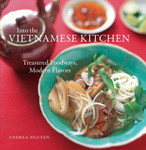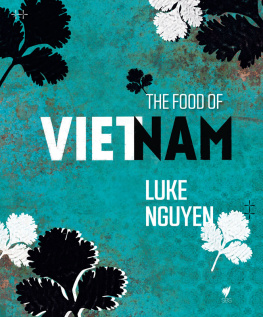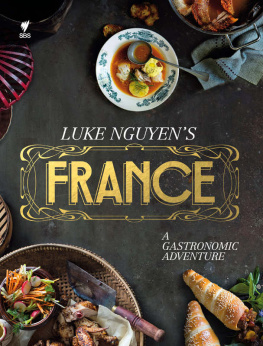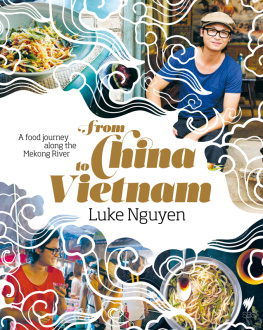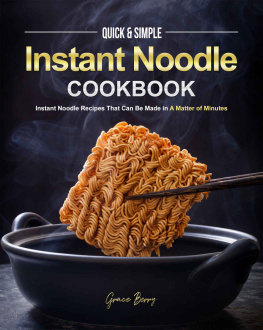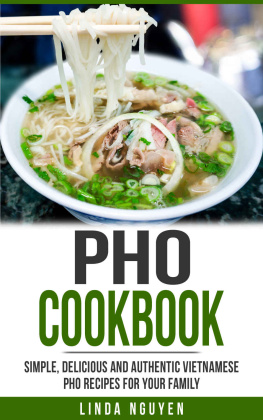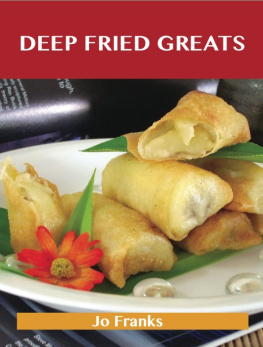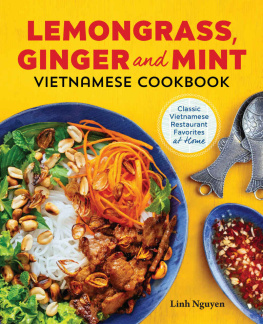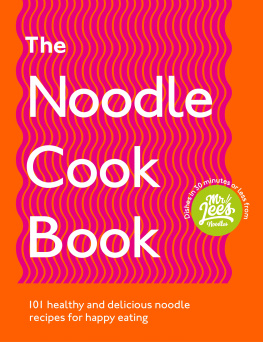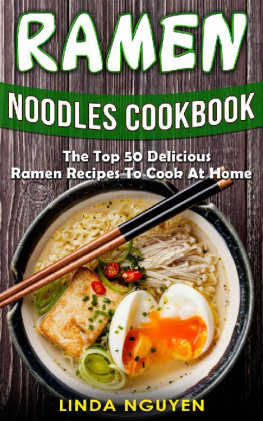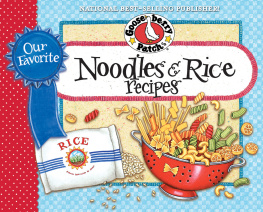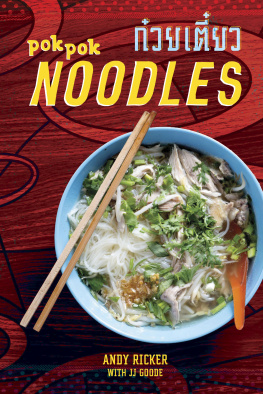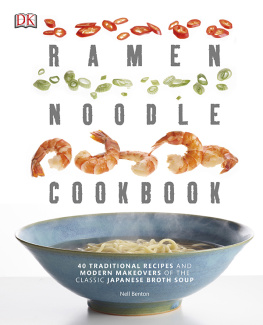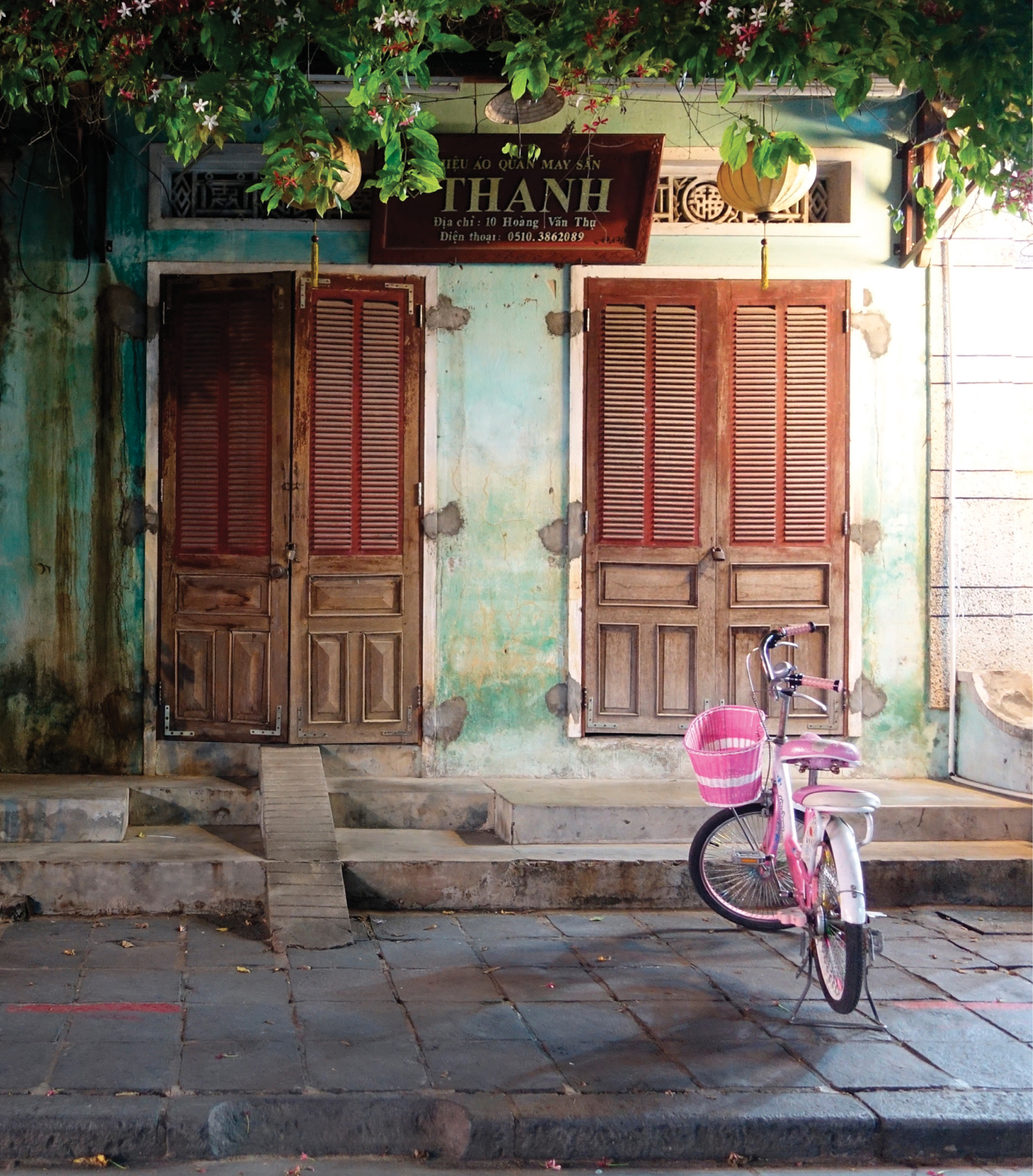Acknowledgments
Who knew that my lifelong relationship with pho would turn into a book? Thanks to my parents, Hoang and Tuyet Nguyen, and husband, Rory, for indulging me.
I was buoyed by the incredible enthusiasm from Ten Speed Press. Team Pho included Aaron Wehner, Hannah Rahill, editor extraordinaire Kelly Snowden, marketing maestros Michele Crim, David Hawk, and Allison Renzulli, and design guru Betsy Stromberg.
I owe a ton to an exceptional group of volunteer recipe testers, as well as their families and friends: Diane Carlson, Alex Ciepley, Jay Dietrich, Alyce Gershenson, Doug and Candace Grover, Thien-Kieu Lam, Ari LeVaux, Laura McCarthy, Hugh McElroy, Catherine McGuire, Rosemary Metzger, Alec Mitchell, Josie Nevitt, Jenny Sager, Karen Shinto, Terri Tanaka, Katherine Thome, Maki Tsuzuki, and Dave Weinstein.
Many others lent a hand. My cousins Kiet Si Nguyen, Phu Si Nguyen and his wife Hanh Thi Do, Hai Si Nguyen, and Huy Le Do offered insights as Saigon and Hanoi residents. Cuong Pham of Red Boat fish sauce prompted a pho expedition. Yun Ho Rhee shared ideas and contacts. Cynthia and Tiet Bui tracked down rare pho souvenirs. Vietnam-based food experts Tracey Lister, Mark Lowerson, Tu Cong Van, Connla Stokes, and Dan Tran generously contributed knowledge. Erica Peters helped validate historical information. Celia Sack championed giving pho a sense of place. Uyen My Hoang, Amy Do, Nickie Tran, and Giang Van volunteered time and friendship. Ive also benefited from countless kind strangers who shared their pho enthusiasm but not their names.
Im also grateful to my Vietworldkitchen.com and social media communities: your comments, likes, and loves matter.
This book looks amazing because of art director and designer Betsy Stromberg, photographer John Lee, and food stylist Karen Shinto and her assistant, Lori Nunokawa. Not only did they bring their professionalism to showcase pho but also props for our photoshoot. Extra thanks to Karen for being a fabulous travel companion and photographer. Copyeditor and proofreader Sharon Silva and indexer Ken DellaPenta ensured that the words were as good as the images.
It takes a small, smart village to make a good cookbook. Thank you, Team Pho!
About the Author
Andrea Nguyen is an author, teacher, and consultant based in the San Francisco Bay Area. Born in Vietnam, she came to the United States at the age of six. Her first book, a childrens book, chronicles that journey. She has written a number of acclaimed cookbooks, including Into the Vietnamese Kitchen, Asian Dumplings, and The Banh Mi Handbook. Many organizations have recognized her excellent work, including the James Beard Foundation, International Association of Culinary Professional, and National Public Radio.
Andreas food writing has appeared in the Wall Street Journal, Cooking Light, Lucky Peach, Saveur, and RodalesOrganic Life, where she is a contributing editor. Keep up with her at Vietworldkitchen.com.
PHO MANUAL
In the Viet food world, pho carries two meanings: a bowl of noodle soup and flat rice noodles. This book explores that broad understanding, and to work smoothly through the recipes, you must first peruse this chapter.
Much of the information is geared toward pho noodle soup because thats the ballast for your food adventure to come. The ingredient guide explains what you need and why you need it, as well as how to source it. Theres information on equipment and dishware, too. Glean the pho soup tips to develop and perfect your skills. The manual supports the five recipe chapters.
Master Pho contains foundational recipes for preparing pho at your own pace and schedule. Adventurous Pho pushes the limits a bit to inspire your pho creativity. Pho Add-Ons offers guidance on extra toppings, garnishes, and sauces so that you may personalize your pho. Stir-Fried, Panfried, andDeep-Fried Pho makes the most of wide pho noodles. Pho Sidekicks includes rolls, dumplings, salads, and drinks to help you plan a special pho meal.
Timing and advanced prep tips are tucked into the recipes throughout. Be sure to read the recipe introductions and Notes sections for extra details. If you make an adjustment, write it down for future batches.
Alongside the standard American measuring system are metric equivalents. With the exception of the , the metric equivalents are stated as practical figures, that is, rounded off so that 16 ounces is 450 grams instead of 454 grams, and 1 ounce is 30 grams instead of 28.35 grams.
These recipes will not be ruined if youre not 100 percent on the mark. Have a sense of your goal and get into the pho spirit.
INGREDIENTS
Making pho is not challenging. Whats needed is likely at your fingertips. Mine the Asian, ethnic food, and bulk spice sections at supermarkets, natural foods markets, and retailers like Cost Plus World Market. However, for great deals on noodles and fish sauce or unusual ingredients such as rock sugar, shop at a Chinese or Vietnamese market. Depending on the recipe, purchase the best chicken, beef, seafood, and vegetables that you can afford. They give their all to define the pho. Your investment will yield stunning dividends. Look to recipe introductions and notes for specific tips.
Below are the most-often-used ingredients in this book. Theyre presented in order of importance and sometimes grouped in a category (for example, spices) to help you prioritize and understand their functions.
Water
Dont neglect the water, a major broth ingredient that matters. Brew the broth with water that you enjoy drinking. Soaking noodles and other prep tasks can be done with regular tap water.
Noodles
Rice noodles carry and convey pho flavor. Made by steaming rice batter into thin sheets and then cutting them into strands, banh ph rice noodles define pho soup. Note that banh ph are flat rice noodles, whereas round bun rice vermicelli noodles are used for other dishes, including .
Flat rice noodles are sold in different widths to match cooking applications; they are used in Vietnamese, Thai, and Chinese cuisines and thus marketed for popular dishes like pho, pad Thai, and chow fun. There is no standard for the sizing, but for the purposes of this book, Ive split them into two categories: Narrow rice noodles (linguine or fettuccine size) are perfect for pho noodle soup. Wide rice noodles (think pappardelle) work best for the stir-fried, panfried, and deep-fried noodles.
Pho noodles are available fresh and dried. In Vietnam, fresh noodles are relatively easy to obtain, but people use dried ones, too. Abroad, the situation is reversed: most cooks prepare dried noodles and occasionally get fresh ones. Dont worry, because the dried ones have a terrific chewiness thats practically as good as fresh. There is a difference in how dried and fresh noodles are used in the recipes. For pho noodle soup, see . Following is a summary of your noodle options.
Dried rice noodles are easy to find and to store for later use.
Availability: Find these noodles at supermarkets and natural foods markets in the Asian or international food section, Chinese and Vietnamese markets in the dried noodle aisle, and Cost Plus World Market in the Asian food section.
Next page

